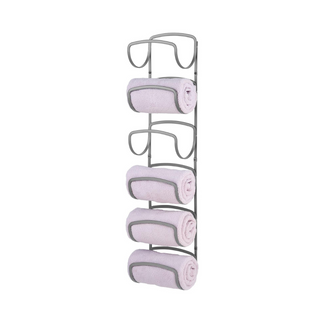A Beginner's Guide to Saddle Room Organization and Equipment Maintenance
- th equine
- Jan 3, 2024
- 5 min read
Updated: Apr 11, 2024
Equine care is not only about passion, it requires knowledge, method and the right tools. As we all know, most tools used in equine care and activities can be quite expensive, so it is important to properly maintain them so that they last longer, as well as to guarantee that that they are functioning properly. For this purpose, everyone needs a saddle room. This space plays a pivotal role in ensuring that your material is well-kept. Also, a well-organized saddle room can greatly improve your working routine and minimize your spendings. In this blog post, we'll talk about the essentials of saddle room organization, equipment maintenance, and the finer details that can really elevate this space.

Illumination, Ventilation, and Water Source
One of the main components of equine gear is leather. For that reason, the saddle room should be dry and well ventilated, to prevent the adverse effects of humidity and fungi.
Adequate Ventilation:
Ensure proper air circulation to prevent the buildup of moisture. This is particularly vital in humid climates where leather is susceptible to mold and mildew. Humidity and these fungi ruin your equipment and are also not good for your health. You may also have to heat the room during the winter, depending on where you live as big temperature differences also affect your equipment.
Quality Lighting:
Illuminate the space with bright, cool-toned artificial lighting. Not only does this enhance visibility during grooming sessions, but it also proven that it contributes to preventing mold growth.
Accessible Water Source:
Have water access for cleaning tools, washing hooves, and other grooming tasks. Depending on the size of your facilities you might also consider having a hot water source.

Saddle Room Organization
A well-organized saddle room is the key to a seamless equine care routine. Here are some organization essentials for the perfect saddle room:
Saddle Stands:
Invest in sturdy saddle stands to maintain the shape and integrity of your saddles. Proper storage prevents warping and distortion and keeps your saddles in good condition longer. There are several models you can chose from, some of them are on the ground and others you can hang on the wall. The important thing is that you opt for stands made from durable materials like metal or treated wood. These materials resist moisture and provide a stable base for your saddles.
Bridles and Headpiece Hangers:
Organize bridles and headpieces on purpose-built hangers. This not only keeps them easily accessible but also prevents entanglement and damage. Choose corrosion-resistant hangers and shelves to withstand the potentially humid environment of the saddle room. Stainless steel or coated options are excellent choices.
Shelves for Protections and Bandages:
Install shelves to neatly arrange leg protections and bandages. A well-organized display ensures quick access when needed, saving you a lot of time. You can keep the materials that you use daily on these shelves and the ones for competitions or that you don’t use so often safely stored in a cabinet. These shelves should be safe, steady and also corrosion-resistant. You can also use boxes for extra organization.
Cabinets for Saddle Pads and Horse Clothes:
Cabinets provide an ideal storage solution for saddle pads and horse clothes, protecting them from dust, dirt, and potential damage. Invest in cabinets with proper seals to keep saddle pads and horse clothes safe from external elements. This ensures they remain fresh and ready for use. Saddle pads and horse blankets that are currently being used, should be hanged and not stored in a cabinet. This gives them a chance to dry between uses a doesn’t introduce humidity in the cabinets.
Also, if more people use your facilities you might consider adding personal cubbies.
Other materials:
Grooming Kit Essentials: Usually you should keep the grooming material that you use daily in the grooming area. The clean ones that you don’t use so often you can keep in a box in the saddle room.
Chemical products and others: Products like detergents, saddle cleaning products or balms should be kept in a separate cabinet or shelf, properly labelled and AWAY from the food supplements.
You can also keep food supplements and other products in the saddle room, but they should be separated from other chemicals.
Equine Pharmacy and First Aid Kit: Keep a well-equipped first aid kit close by for any minor injuries. Safety first! Some people also keep the pharmacy in the saddle room, but this should be a separate cabinet, in a fresh place, that can be locked.
Maintaining the Saddle Room
To ensure your saddle room remains efficient and safe, here are some maintenance tips:
Regular Cleaning: Sweep regularly to keep the space free from dirt, dust, and debris.
Organization Overhaul: Periodically assess your storage solutions, reorganizing as needed. Keep frequently used items easily accessible, adjusting your setup as necessary. This also allows you to throw away any products that are not good anymore.
Clutter Prevention: Declutter your space regularly to maintain efficiency and prevent safety hazards.
Stephan's Tip: The golden rule – when you're finished, put your stuff away. If you leave it laying around, it’s mine!

Tool and Equipment Maintenance
Saddle and leather materials maintenance:
Saddles and leather materials normally don’t need to be washed, but you should dust them off after every use to maintain proper functionality. If they are dirty, you can wash them with water, but don’t use soap, because it destroys the stiches. When you wash them with water you must let it dry and then apply some form of fat, because water dehydrates leather. For nourishing the leather, you can use fat, balm or oil, there are all kinds of special products you can chose from and some products also change the colour of the leather, making it darker or changing the tonality. These colour changing products can be very useful when you had water stains or mold in an equipment that you are trying to rehabilitate. If you put fat in the saddle you should polish it, because these products will stain your clothes.
Bridles and metal equipment:
Bridles and metal materials that are in contact with sweat need to be washed regularly. You can wash them with water and use glycerine soap and steel wool. There are also products you can use to make the metal shinier.
Girths, bandages, saddle pads and blankets:
These equipment should be washed regularly, because the dead skin accumulates and then starts to cause friction zones that hurt the horses. However, you should pay attention, because some horses are sensitive to certain detergents.
Grooming tools:
Clean grooming tools regularly to prevent infections and ensure longevity. Check for wear and tear, replacing items as needed.
If you regularly clean your equipment and brash off the dirt and dust everyday you will keep your equipment in good conditions for a long time. Also there is nothing better then the feeling of arriving to your saddle room and having everything clean and ready to work!

Elevating Your Equine Experience
Crafting a practical and efficient saddle room is a universal need, regardless of the scale or sophistication of your stable. Whether you have access to a top-notch facility or simply have a storage room in your house, the key lies in creating an organized, clean and safe space that fulfils YOUR needs. Create a space that works for you. What changes or details have you implemented in your grooming area that you just can't live without? Share your tips below! 👇
See you next week,
Isabel & Stephan















































Comments